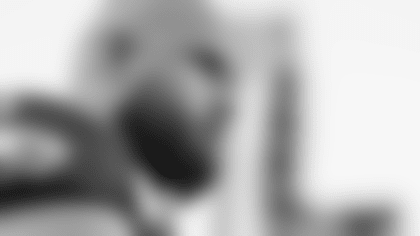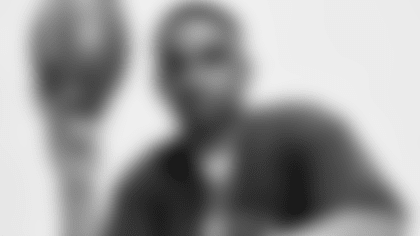As different as the 2020 NFL Draft will be for those drafted, for the teams, the fans – it's going to be just as different for the media covering the three-day event. Once upon a time, the NFL Draft was an "Oh-it's-that-time-of-the-year-again" event. Now it's must-see television, and the ratings this year, in the midst of the COVID-19 global pandemic, will reflect its popularity.
"I've always called it the single-most exciting, off-the-field day in sports," said Merrill Reese, a member of the Philadelphia Eagles Hall of Fame who has been the Voice of the Eagles since 1977. "And in this strange year, it is a welcome respite from reading about the ravages of this disease."
Long ago, the Eagles held their draft – the NFL Draft started in Philadelphia back on February 8, 1936 at the Ritz-Carlton Hotel – in the cozy confines of their Center City offices at 15th and Locust Streets in Philadelphia and then moved the headquarters to the old Philadelphia Evening Bulletin building at 30th and Market Streets. Back then, Reese recalls there were maybe a half-dozen to a dozen reporters there. One of them was Ray Didinger, who in 1970 was in his first year as an Eagles' beat reporter for The Bulletin.
It was the final season for the Eagles in Franklin Field and the headquarters at 30th and Market included the coaches offices, the executive offices, and the ticket office all on the first floor of the building. And the NFL Draft wasn't a very big deal at all.
"It was nothing like it is now. It was one guy from each newspaper. There was no radio. Certainly no TV. It was just a half-dozen beat guys (daily reporters) sitting around a table with no access to television. We just sat around the table and every time there was a pick, Jimmy Gal (Jim Gallagher, former Eagles public relations man and a member of the Philadelphia Eagles Hall of Fame) would come in and write the name on a blackboard. When the Eagles made a pick, he would distribute mimeographed sheets with the information on him – his college information and stuff like that," Didinger said.
"Then Pete Retzlaff, the general manager of the team, and Jerry Williams, the head coach, would come down and talk to us about it. Sometimes we would have a chance to talk to the player. Sometimes, if it was a small-school player, they couldn't find him for a couple of days. That's just the way it was."
The Eagles moved their draft headquarters to Veterans Stadium the next year, in 1971, using a lounge area behind the press box. It was still small-time stuff until ESPN came along and the first televised draft took place in 1980.
"Television and the fact that football overtook baseball as the true national sports pastime in this country changed everything," Reese said. "Back then, it was impromptu, and the availability of coaches and assistant coaches was different. They were fair game. It wasn't a problem because there were only a few reporters around. All you needed was a pen and a piece of paper to write down the quotes. There were no press conferences.
"Yes, the NFL Draft is dramatically different now."
"It's just as much of a TV show now as it is an NFL Draft," Didinger said. "Once ESPN came along with wall-to-wall-coverage, everything changed. You feel so much more connected to it."
Today, armed with All-22 reviews and NFL Draft guides and an endless stream of access to information, literally anybody can "grade" players and instantly assess when a team makes a "great" pick or "reaches" for a player. It's common for reporters who follow the draft intently to prepare their own "Big Board" in the days leading up to the draft. How accurate those evaluations are really is a matter of interpretation.
Not that it matters much. The NFL Draft is a big deal for everyone. In a normal year at the NovaCare Complex, the Eagles host dozens of reporters who cover the team for their newspapers, websites, radio stations, television stations, all of whom have a social media account to fill. The media headquarters are located adjacent to the main building at the NovaCare Complex, and most of the reporters hang out in a comfortable room with a large television watching the draft. Some watch in the Complex's auditorium.
All of them make sure to visit the cafeteria for dinner on each night of the draft and brunch and dinner on the third day.
When the Eagles make a selection, the media relations team quickly gathers extensive information sheets on the new players and distributes them to the reporters, who are led into the auditorium for post-pick press conferences. Then the players are made available for conference calls with the reporters, who rush off afterward to write their stories and file their reports and, in many cases, instantly grade each pick.
"Everything you want is right there for you," Reese said. "The information is instantly available."
In every way, then, the NFL Draft is a smorgasbord. It's not uncommon for anyone at the NovaCare Complex to gain substantial weight during the three days with so much food available – the spread for the football operations staff and Eagles employees upstairs at the NovaCare Complex is killer, with surf and turf and specialty pizzas and ice cream and every kind of snack – and so much time to kill.
In 2020, it's all different. Again. The Eagles are conducting their business in remote locations. The media have stay-at-home responsibilities. The press conferences will be virtual.
The NovaCare Complex will be empty.
"I'm going to miss it so much this year, but that's how it goes," Reese said. "I'll be sequestered – which I think is a better word than 'quarantined' – in my easy chair looking at my large-screen TV. It's certainly not as large as the TV at the NovaCare Complex, but I'll be here and if you need me for comments, I'm otherwise not involved. I will be watching every move made in the NFL Draft, as I always do."














